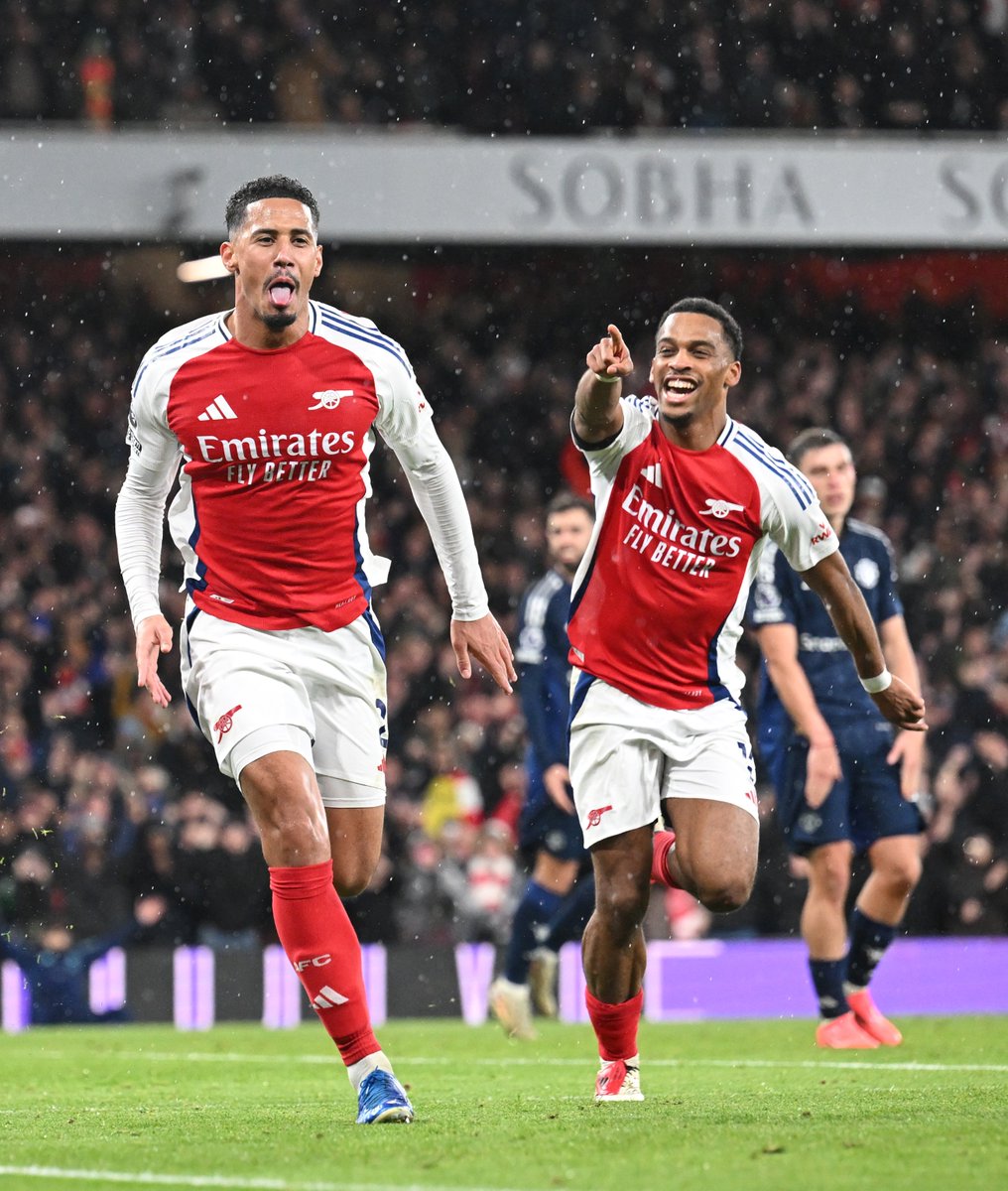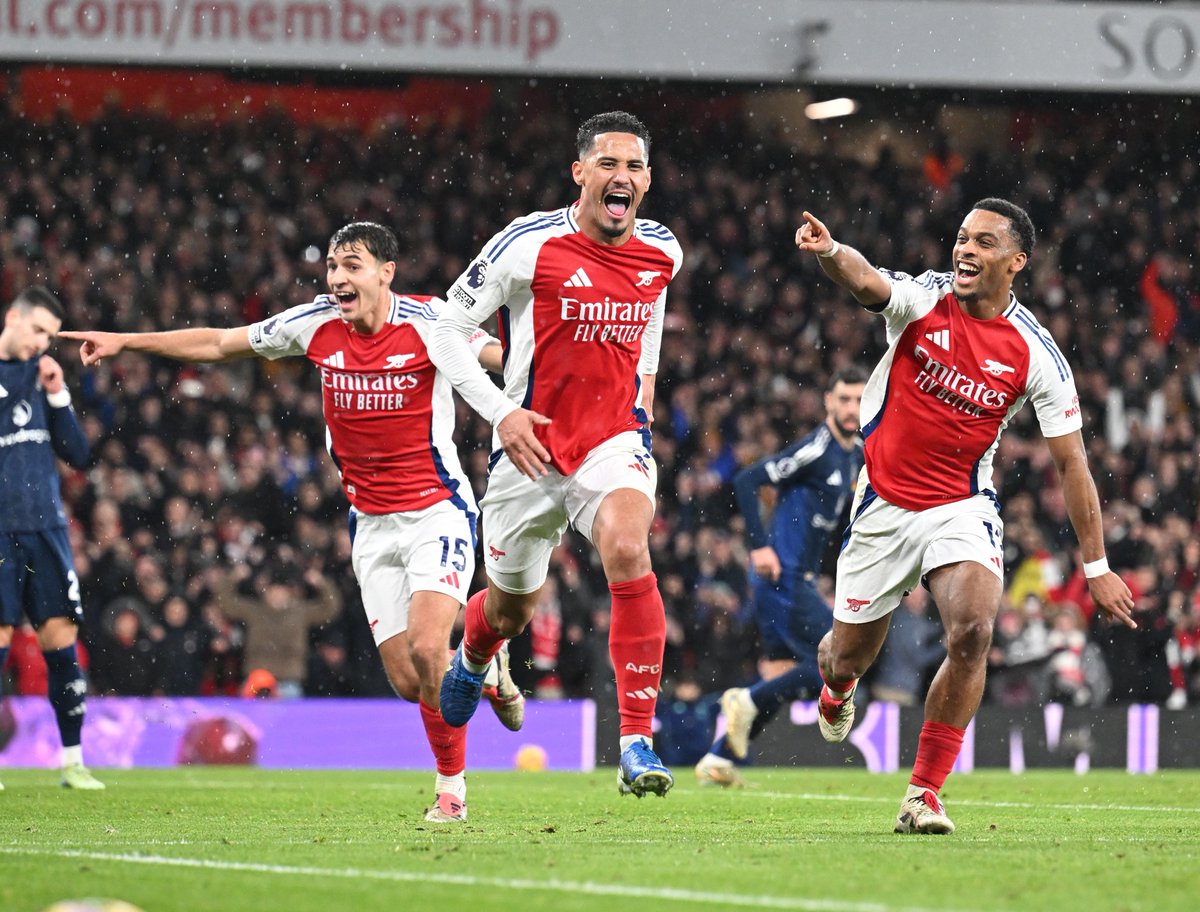Premier League 2022/2023
Brighton & Hove Albion FC #BHAFC vs Arsenal FC #AFC
Match Analysis
[THREAD]
Brighton & Hove Albion FC #BHAFC vs Arsenal FC #AFC
Match Analysis
[THREAD]

Formation
Arsenal, managed by Mikel Arteta, used a 4-3-3 formation.
Meanwhile, Brighton, managed by De Zerbi, used a 4-2-3-1 formation.
Arsenal, managed by Mikel Arteta, used a 4-3-3 formation.
Meanwhile, Brighton, managed by De Zerbi, used a 4-2-3-1 formation.

Brighton's Build Up vs Arsenal's Defence.
De Zerbi's idea is to build up by using a double pivot that closes to each other and performs combinations.
This was also assisted by Sanchez (GK) so that Brighton had numerical superiority (7v5) in the first phase.

De Zerbi's idea is to build up by using a double pivot that closes to each other and performs combinations.
This was also assisted by Sanchez (GK) so that Brighton had numerical superiority (7v5) in the first phase.


Meanwhile, Arsenal defend using 1 or 2 pressers in front with the idea being to close central progression.
https://twitter.com/ruangtaktik/status/1609347841654427649?s=20&t=TsSDM4AXdMYuz34cQKPBxg
Then when the opponent presses the double pivot, Lallana and Trossard will drop to expose space number 10.
However, Arsenal has been able to neutralize this method with Partey and Saliba pressing aggressively on Trossard and Lallana.


However, Arsenal has been able to neutralize this method with Partey and Saliba pressing aggressively on Trossard and Lallana.
https://twitter.com/MT_Analysis/status/1587327534173065216?s=20&t=-5objqSmBxbqB25Ic_BcXA


Then when Brighton played to the flank, Zinchenko would go up and press aggressively by making pressing traps. 



Because of that, Sanchez (GK) tries to play more directly with long passes to both wingers who hold the width (ex: March). But it can also be thwarted with Gabriel who defended wide to the left. 



Arsenal's Rest Defence
As already analyzed in the match against West Ham, Arsenal has a good rest defence structure. This structure allows Arsenal to counter-press quickly to sustain pressure.


As already analyzed in the match against West Ham, Arsenal has a good rest defence structure. This structure allows Arsenal to counter-press quickly to sustain pressure.
https://twitter.com/MT_Analysis/status/1608061323195330560?s=20&t=TsSDM4AXdMYuz34cQKPBxg


A good rest defense structure allowed Arsenal to score the first goal in this match. Arsenal was attacking with 5 players but failed and Brighton tried to counter.
However, the rest defense filled by Zinchenko-Partey was able to counter press and was able to win over the ball.

However, the rest defense filled by Zinchenko-Partey was able to counter press and was able to win over the ball.


Previously, @Jon_Mackenzie also discussed how good Arsenal's rest defence structure.
https://twitter.com/TifoFootball_/status/1590630347426959364?s=20&t=TsSDM4AXdMYuz34cQKPBxg
Brighton's backline can still keep up with Arsenal's attackers, by defending using 3 defenders. However, Martinelli's pass hit a deflection and allowed Saka to escape his marker and score. 



Attack Through Brighton's RHS Defence.
Generally Arsenal defend using 4 defenders. Helped by Arsenal midfielder (Xhaka-Partey) who drop so that Arsenal could defend using 6 players. Arsenal's compact defence can get them into a transitional situation.
Generally Arsenal defend using 4 defenders. Helped by Arsenal midfielder (Xhaka-Partey) who drop so that Arsenal could defend using 6 players. Arsenal's compact defence can get them into a transitional situation.

Partey made a clearance so Arsenal could counter attack. Arsenal did not counter quickly, but would circulate patiently to shift the defensive shape of Brighton by targeting the right side of Brighton's defense which was guarded by Lamptey. 



From the attack sides of the whoscored version, Arsenal attack more from the left side (45%) by targeting Brighton's RHS (Lamptey).
Martinelli's shot was blocked by Sanchez, but Nketiah's movement was able to escape Dunk and score on a rebound.

Martinelli's shot was blocked by Sanchez, but Nketiah's movement was able to escape Dunk and score on a rebound.


On the 4th goal, Odegaard released a through pass to Martinelli on the RHS of the Brighton DEF.
We can also see Colwill advancing to press Odegaard and Nketiah's role in pulling Dunk forward (Brighton High Line DEF) so that Arsenal can exploit the space behind the backline.

We can also see Colwill advancing to press Odegaard and Nketiah's role in pulling Dunk forward (Brighton High Line DEF) so that Arsenal can exploit the space behind the backline.


After scoring his first goal in the 65th minute, Brighton tried to be more aggressive to score a goal and increased their defensive line height so that there was space behind Brighton's backline that Arsenal could exploit (especially during counterattacks).
From @markrstats
From @markrstats

Arsenal's CK Structure
After previously scoring the 1st goal through a good rest defence structure, Arsenal again showed good structure. But this time, it was Arsenal's CK structure.
During the CK, there are 4 players who are in the goal area to duel and distract the GK. (cont)

After previously scoring the 1st goal through a good rest defence structure, Arsenal again showed good structure. But this time, it was Arsenal's CK structure.
During the CK, there are 4 players who are in the goal area to duel and distract the GK. (cont)


Gabriel who has the best heading ability is at the penalty spot, Nketiah is at the far post to attack through the flank blindside, while Odegaard-Zinchenko-White forming a rest defence to sustain pressure. 



How did Brighton break down Arsenal's defensive block?
Previously Brighton attacked with 5 players. In the 1st goal, Brighton attacked with more players (6) so that Arsenal's backline was outnumbered (6v4).

Previously Brighton attacked with 5 players. In the 1st goal, Brighton attacked with more players (6) so that Arsenal's backline was outnumbered (6v4).


#BHAFC created an overload on the RHS of #AFC defence (3v1 situation) with Gross coming forward from the pivot. Saka drop to help Tomiyasu but it was too late. This left Tomiyasu outnumbered, allowing Gross to pass to Mitoma.
Wide overload to create numerical superiority.
Wide overload to create numerical superiority.

The Vital Role of Brighton's CB
With Arsenal blocked the access for central progression, Colwill and Dunk have played a key role in Brighton's build-up process.
Both of them became the most active players in carrying out ball progression via pass + carry.
From @markstatsbot

With Arsenal blocked the access for central progression, Colwill and Dunk have played a key role in Brighton's build-up process.
Both of them became the most active players in carrying out ball progression via pass + carry.
From @markstatsbot


Colwill could provide passes like this. That's what makes him very active in terms of progression.

https://twitter.com/mt_analysisvid/status/1609626516773797888?s=20&t=nfLiOCr6Co7uNR1fkEmvdg

Exploit the space behind Arsenal's backline
For Dunk, at certain moments he provided dangerous through passes like this to exploit the space behind Arsenal's backline.
For Dunk, at certain moments he provided dangerous through passes like this to exploit the space behind Arsenal's backline.
https://twitter.com/mt_analysisvid/status/1609627033885343744?s=20&t=nfLiOCr6Co7uNR1fkEmvdg
With Arsenal defending with high line, there is space that Brighton can exploit. Brighton took advantage of Dunk ball-playing abilities, to provide a through pass to Evan Ferguson who was able to win the duel against Saliba.
https://twitter.com/mt_analysisvid/status/1609627787543080960?s=20&t=nfLiOCr6Co7uNR1fkEmvdg
The video version will be posted on @ruangtaktik 's Youtube channel.
Versi video akan di post di Youtube @ruangtaktik
.
Versi video akan di post di Youtube @ruangtaktik
.
You can watch the video now⬇️
• • •
Missing some Tweet in this thread? You can try to
force a refresh































